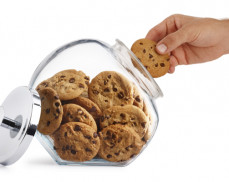
Anyone who has been in the restaurant industry has undoubtedly heard horror stories of employees stealing from restaurant owners. These stories are often viewed as fables warning against lackluster management or lazy managers. Despite this belief, however, these matters are very real and any restaurant owner or manager should be aware of what some of the most common tricks are and what to look out for. The National Federation of Independent Business estimates that as many as 30% of the average company’s employees do steal and the National Restaurant Association estimates that these thefts account for roughly 4% of annual sales. This is a huge number! Say, for example, your restaurant does $1,000,000 in sales this year. At 4%, your business would be losing $40,000 due to theft alone! Below is a list of some of the most common ways employees can manipulate systems in place at your restaurant for their own benefit.
1. “The Roving Coke” – This trick is one of the most common ways employees trick the restaurant POS system. When starting a shift, a server will ring a very commonly ordered item (soda, salad, coffee, or any other self-service item) onto a check. When this item is ordered, the server will reopen the check with two sodas on it. At the end of the transaction, the server will present the check with two sodas, but transfers the cost of the second soda on to a blank transaction, leaving the difference as a tip for themselves.
2. “The ‘Good’ Server” – This trick is not necessarily an overt theft, but it ultimately costs your restaurant money. This trick involves servers intentionally eliminating self-service sodas or other low-cost items on the guest check. By doing so, the customer feels as though the server was more generous with them, so they tip the server more while your restaurant loses that product and profit.
3. “Tip Jar Trick” – If your restaurant depends on a cashier, you are susceptible to this common trick. When faced with a patron paying with cash, a cashier who has a good handle on the price of self-serve items like cups, cookies, brownies, or other small items may decide to not ring this self-service item into the POS system. However, the price of the item is mentally calculated into the transaction and the difference goes into the tip jar.
4. “The Tip Trick” – This trick often sees success because of all the hassle it creates. When a patron is presented with a credit card slip, the server may enter a tip amount greater than the patron originally wrote. When the shift ends, the server cashes out and receives their tips. Most customers won’t even recognize that the number they signed off on and the number that appears on their credit card statement is different. The ones that do call to complain will receive a credit from the restaurant. The restaurant owner must then track that particular slip down from that particular night and find that particular server and withhold that amount of money from their pay. This usually lasts about 5 minutes on the to-do list before becoming swallowed up by other responsibilities.
5. “The Switch” – If your business operates with a cashier, a cash-paying customer could request one particular item, but the cashier could ring up a more expensive item and keep the difference for themselves. In a bar setting, for example, a patron could order a drink and be charged for a top-shelf liquor while the bartender rings the drink up as a well liquor and pockets the difference.
6. “Manager Comps” – Sometimes, managers and employees will begin to collude to figure out ways to better help themselves. One such way managers may steal is by providing manager comps. When checks are open and customers pay cash, managers can comp items claiming customer dissatisfaction and keep the cash for themselves. It is also common to see servers working with managers to pull off this trick. There are many different ways this one can be used. One variation includes claiming that the party walked out and didn’t pay while the server pockets the full amount of the bill. It is important to keep a close eye on all manager comps so that managers cannot become comfortable with what a “normal” number of comps should be.
7. “Sticky Fingers” – Often times, an employee will think that taking a few avocados or a filet every now and then is a not a big deal. However, over time, these items add up! Setting up a perpetual inventory management system that allows you to track your inventory will not only ensure your business is operating efficiently, but it also allows you to closely monitor high-cost items that may be easy for employees to take home. A basic perpetual inventory system only takes 3 to 5 hours a week to perform, but the cost is easily justified by having a good knowledge of inventory and will drastically cut back on shrinkage.
8. “The ‘No Sale’ Button” – In any situation where the cashier has access to the cash drawer through the “No Sale” button introduces a great amount of risk for employee theft. Most POS systems can turn this feature off, which is the safest option to prevent any situations. Some POS systems also disable the touch screen when the cash drawer is open to prevent employees from entering orders to get a total, then clearing the sale and pocketing the cash. If your cashiers or bartenders absolutely need a “No Sale” button, be sure to keep a close eye on all reports to identify employees with any abnormally large number of No Sales.
This list identifies some of the most common ways we have seen employees game the system to help themselves. By engaging in these different tricks, employees are hurting your bottom line. With a good POS system and some consulting, many of these tricks and more can be identified and eliminated.

[…] The National Federation of Independent Business estimates that as many as 30% of the average company’s employees do steal and the National Restaurant Association estimates that these thefts account for roughly 4% of annual sales. This is a huge number! […]
In no way was this list expected to be comprehensive but these are 8 of the most common ways we have seen.
[…] scams have always been a part of life. Everyone has to be mindful of people that are trying to take advantage of certain situations or certain weaknesses. The restaurant industry is especially prone to […]